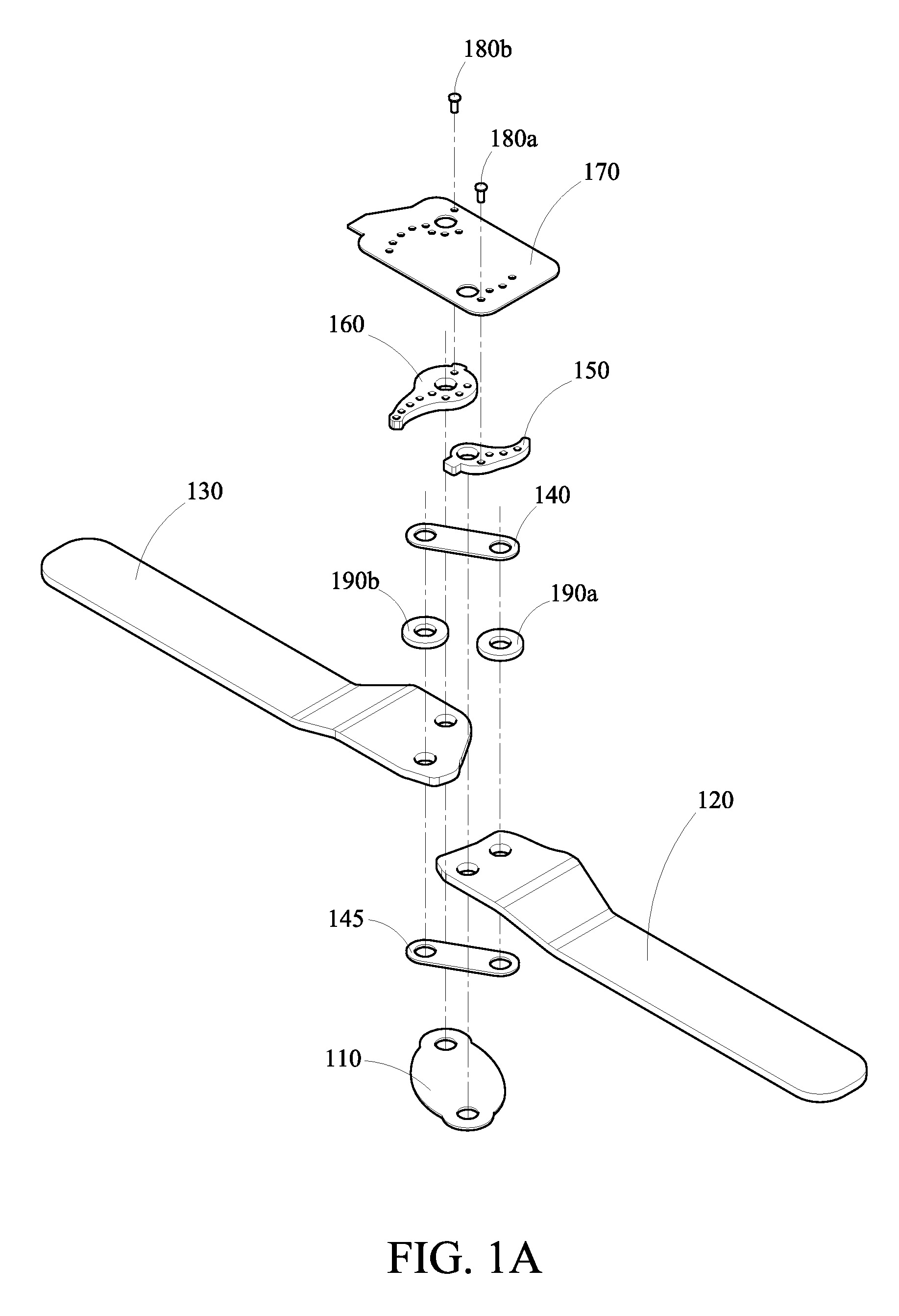Knee brace for rehabilitation
a knee brace and joint brace technology, applied in the field of knee braces, can solve the problems of limiting the moving angle between the upper and lower braces, affecting the effect of the joint brace, so as to reduce the counterforce
- Summary
- Abstract
- Description
- Claims
- Application Information
AI Technical Summary
Benefits of technology
Problems solved by technology
Method used
Image
Examples
first embodiment
[0035]FIG. 3 is a schematic view of the disclosed knee brace for rehabilitation where the limiting value of extension angle is set to be 150 degrees. As shown in the drawing, if the paramedic evaluates the injured knee joint (anterior cruciate ligament, so-called “ACL”, injury, posterior cruciate ligament, so-called “PCL” injury, or osteoarthritis, so-called “OA”) of the patient and determines that the joint can extend by 150 degrees at most, he or she can use the first adjusting part 150 of the first limiting block 150 to rotate the first limiting block 150 with respect to the first pivotal axis 122 so that the first positioning hole 152 corresponding to the 150-degree limiting extension angle corresponds to the first through hole 172 on the front sheltering plate 170. The positioning pin 180a then goes through the first through hole 172 and gets fixed in the first positioning hole 152. In this case, the first limiting block 150 and the fixing base 110 are fixed as shown in the dra...
second embodiment
[0036]FIG. 4 is a schematic view of the disclosed knee brace for rehabilitation where the limiting value of extension angle is set to be 120 degrees. As shown in the drawing, if the paramedic evaluates the injured knee joint of the patient and determines that the joint can extend by 120 degrees at most, he or she can use the first adjusting part 154 of the second limiting block 160 to rotate the second limiting block 160 with respect to the third pivotal axis 132 so that the second positioning hole 162 corresponding to the 120-degree limiting flexion angle corresponds to the second through hole 174 on the front sheltering plate 170. The positioning pin 180b then goes through the second through hole 174 and gets fixed in the second positioning hole 162. In this case, the second limiting block 160 and the fixing base 110 are fixed as shown in the drawing. As the lower brace 130 swings with the user's leg, the angle between it and the upper brace 120 is at least 120 degrees. That is, t...
PUM
 Login to View More
Login to View More Abstract
Description
Claims
Application Information
 Login to View More
Login to View More - R&D
- Intellectual Property
- Life Sciences
- Materials
- Tech Scout
- Unparalleled Data Quality
- Higher Quality Content
- 60% Fewer Hallucinations
Browse by: Latest US Patents, China's latest patents, Technical Efficacy Thesaurus, Application Domain, Technology Topic, Popular Technical Reports.
© 2025 PatSnap. All rights reserved.Legal|Privacy policy|Modern Slavery Act Transparency Statement|Sitemap|About US| Contact US: help@patsnap.com



